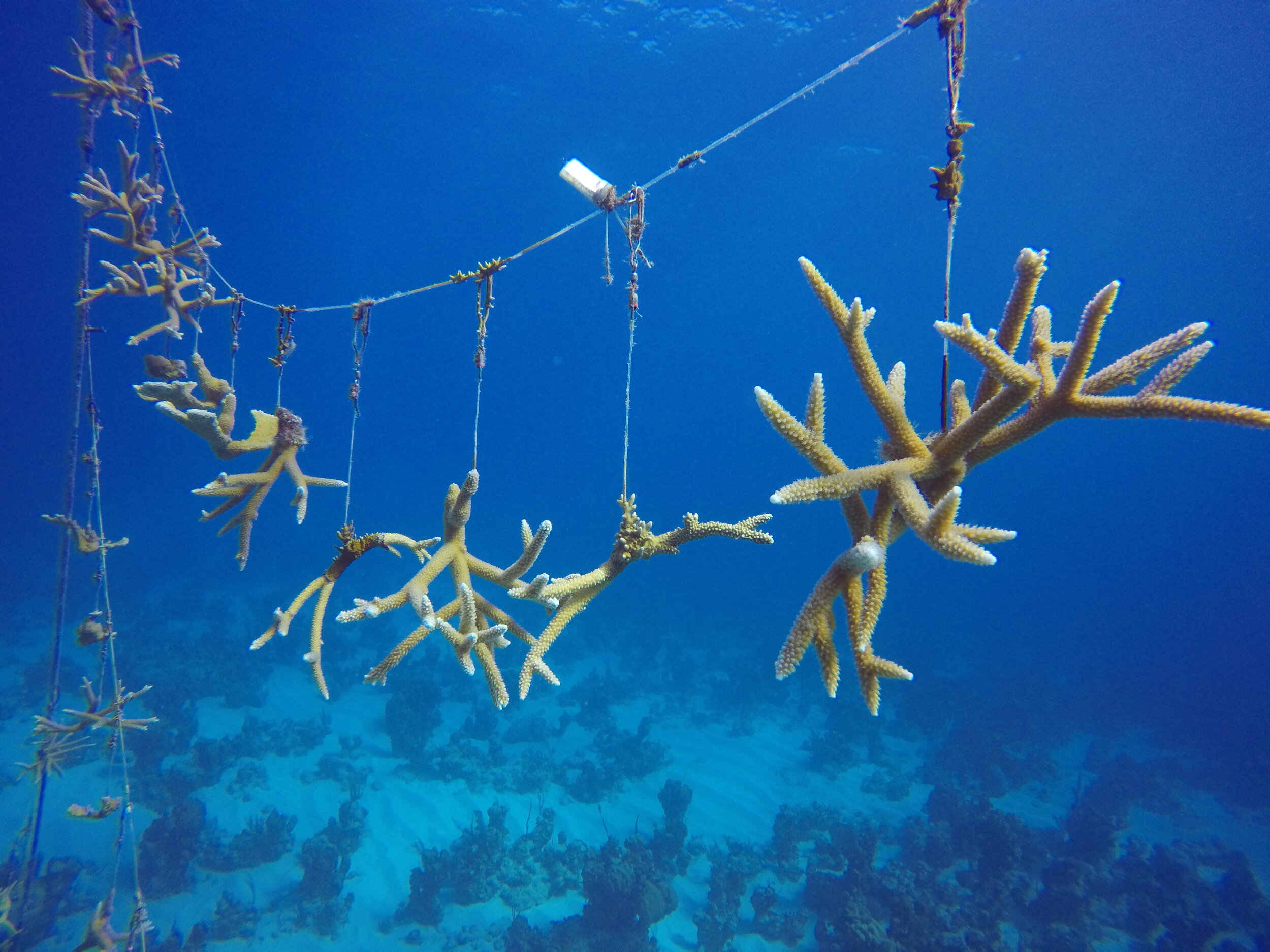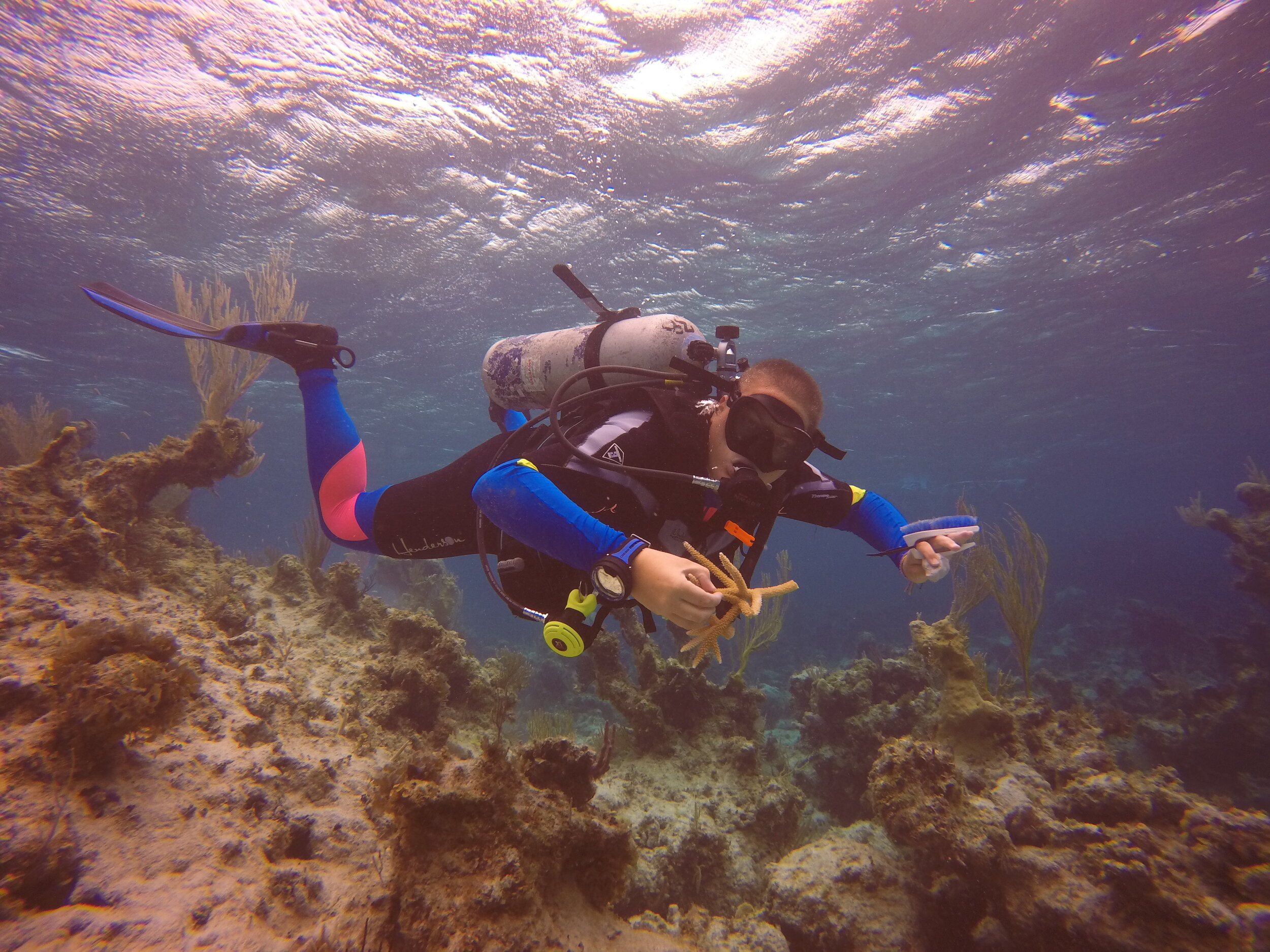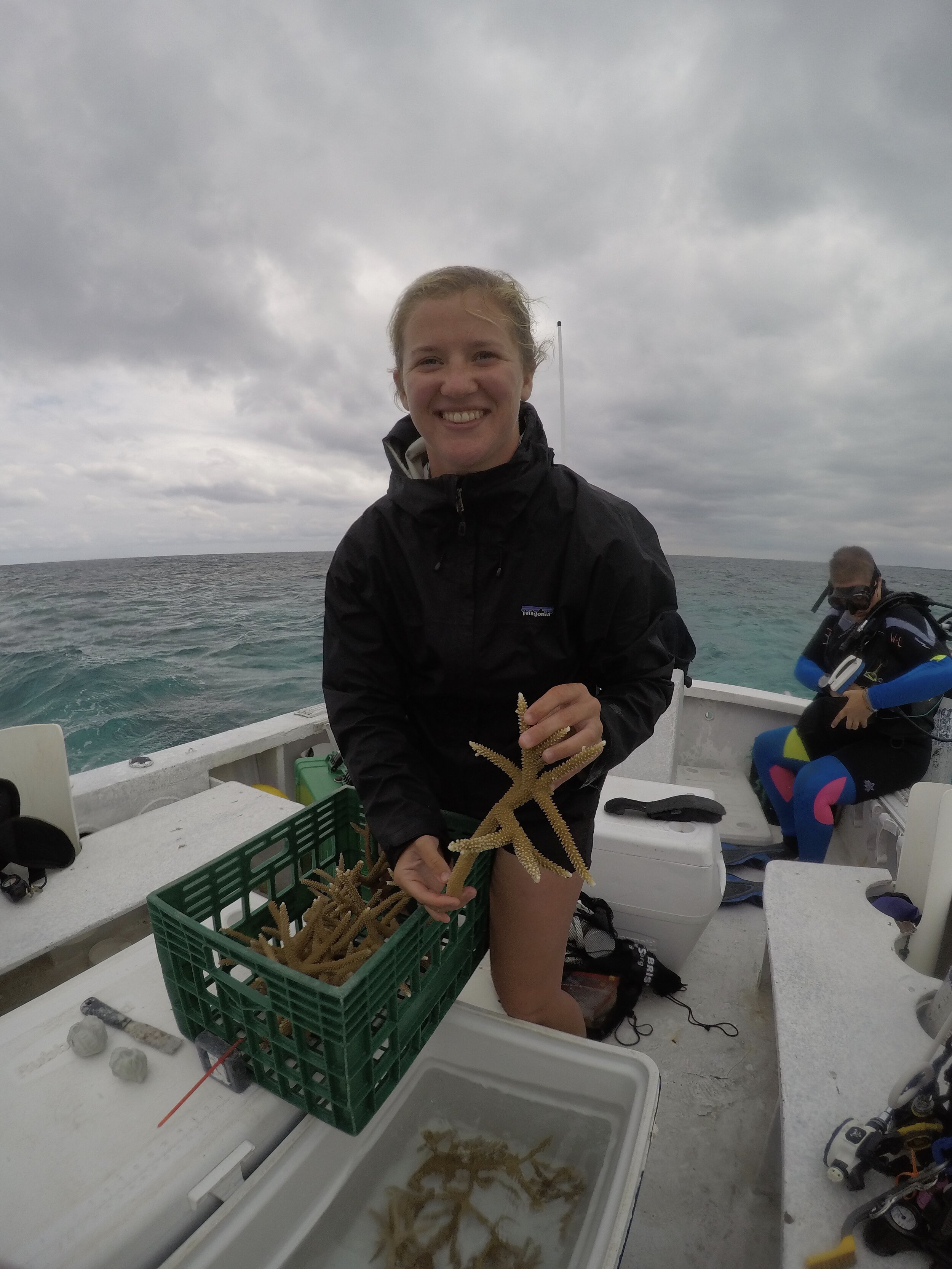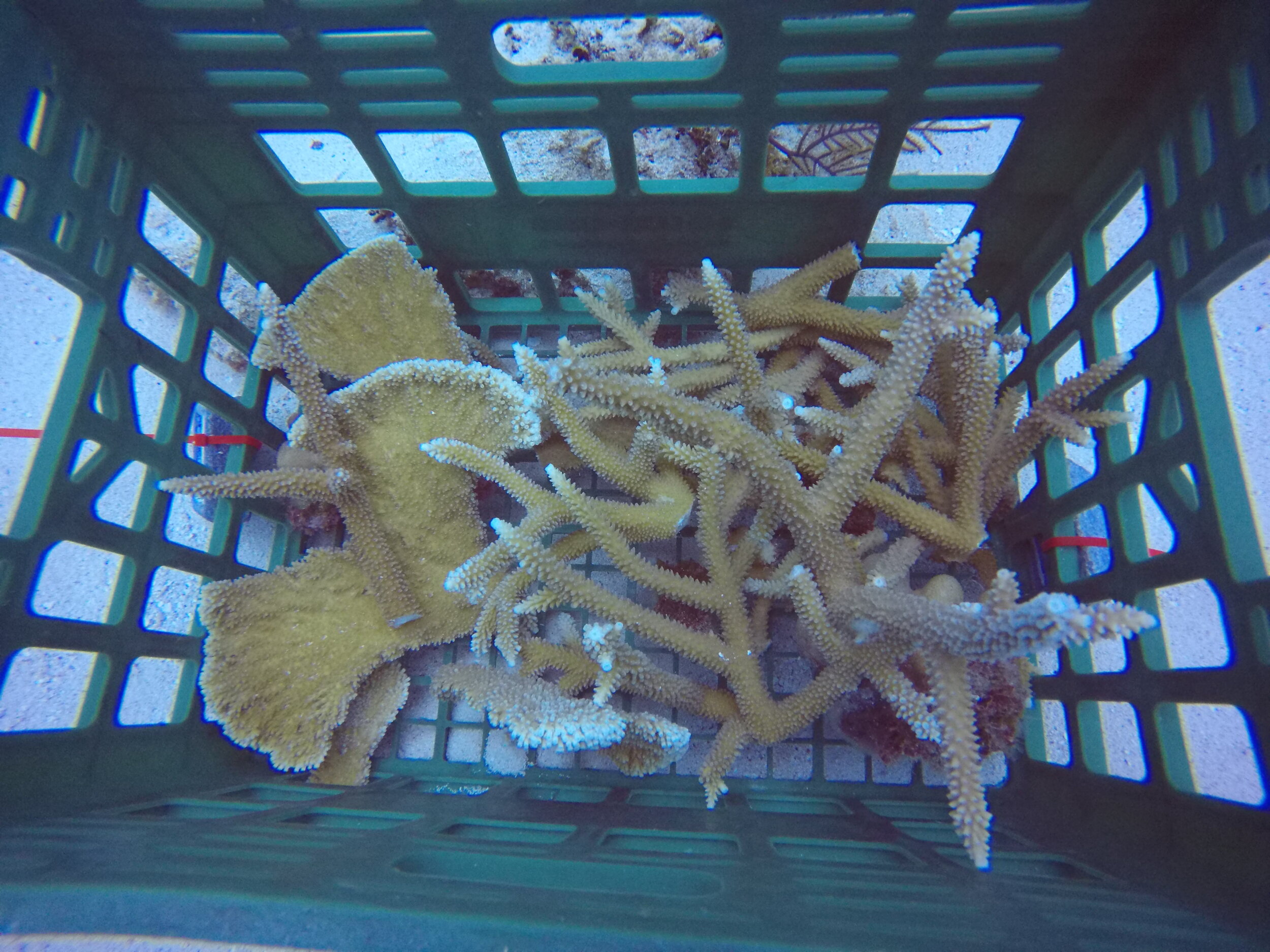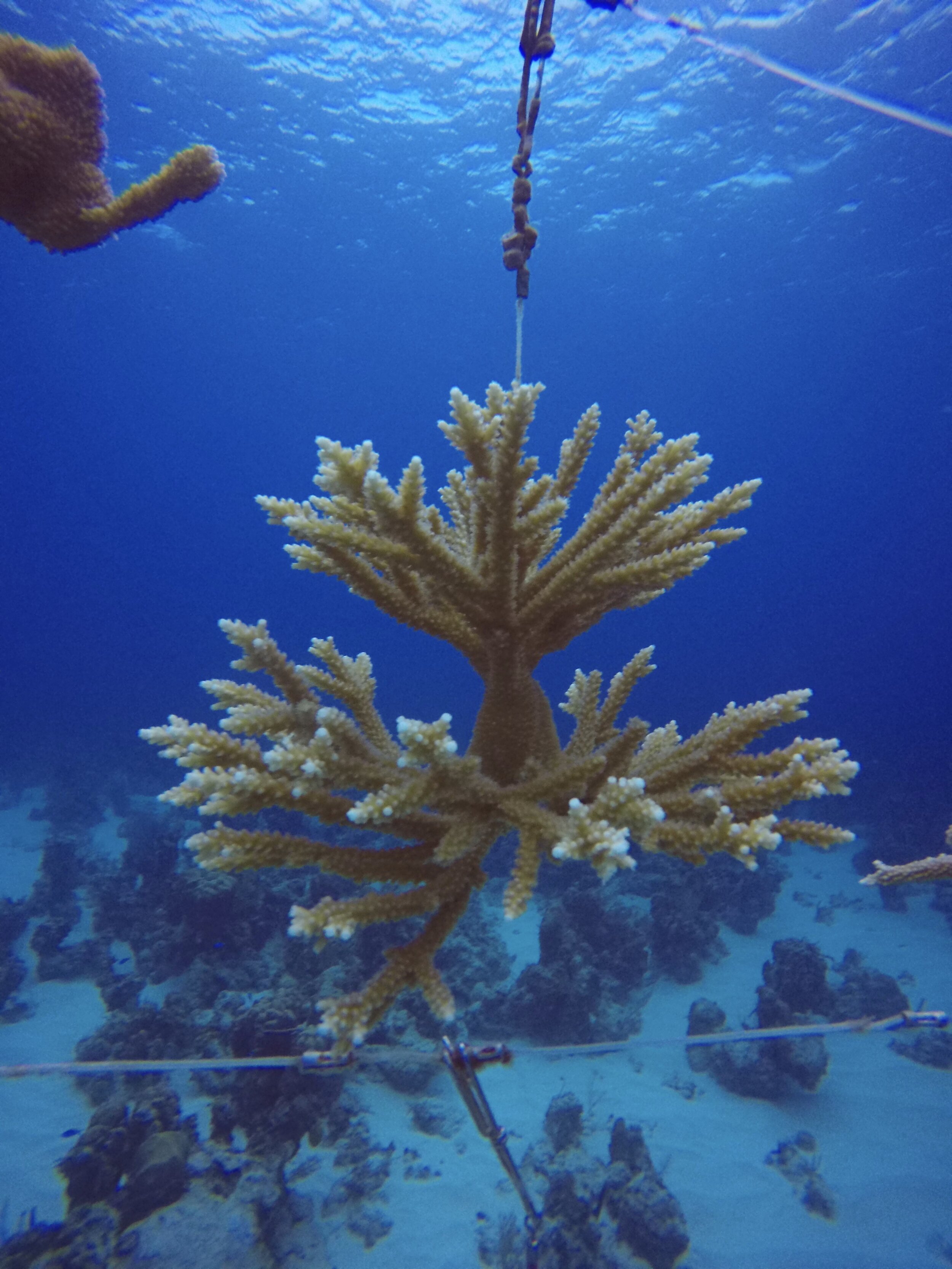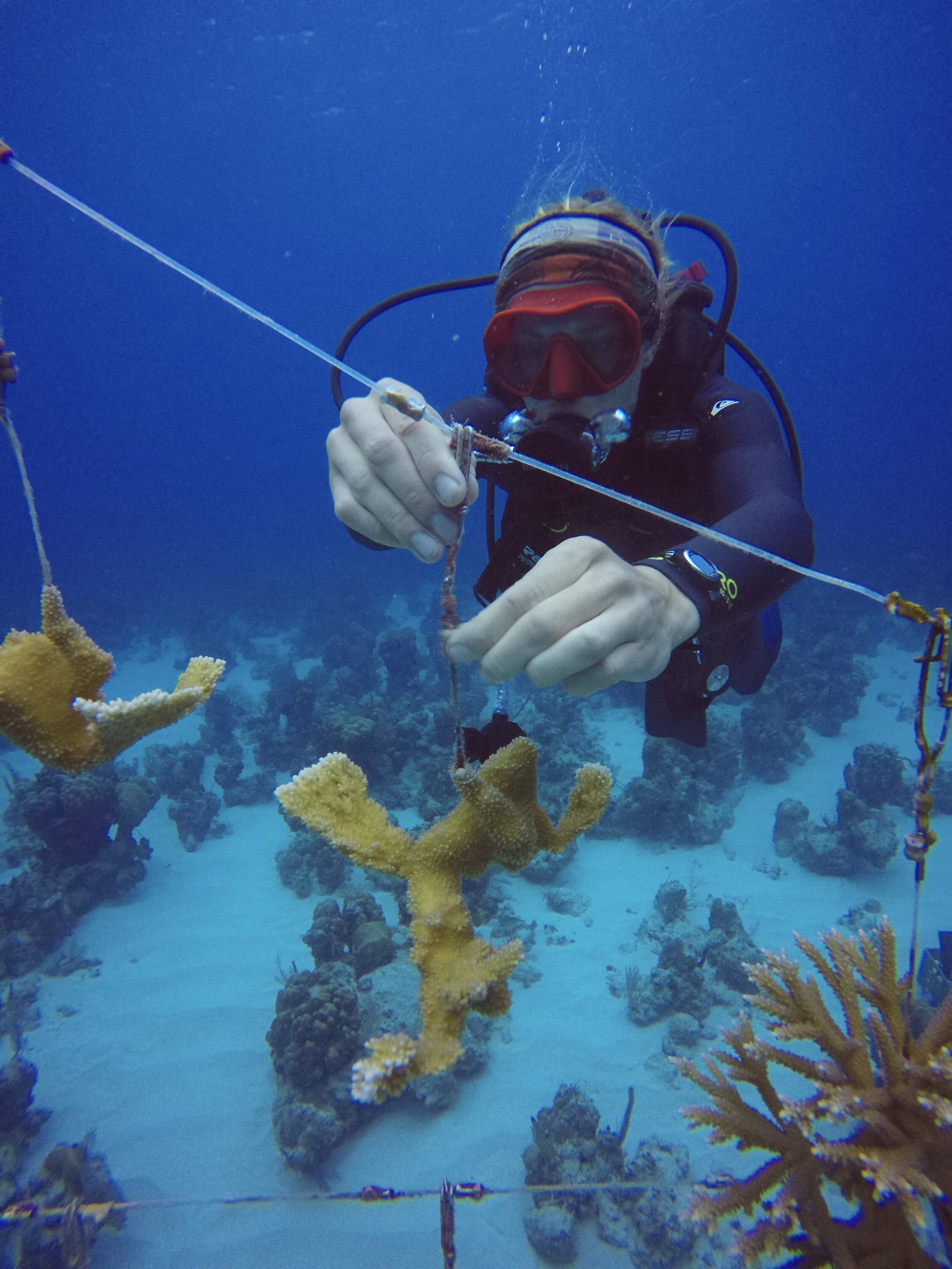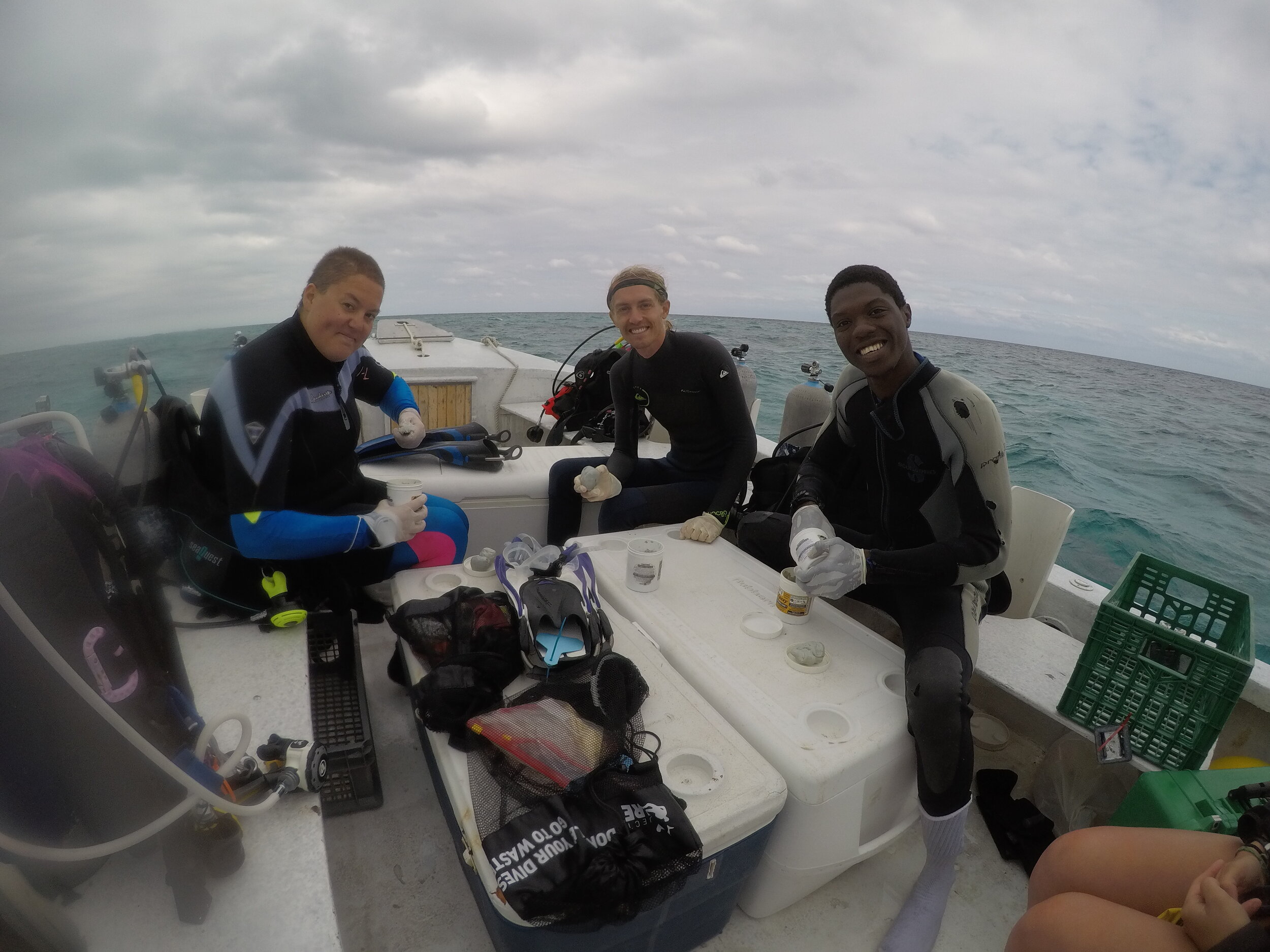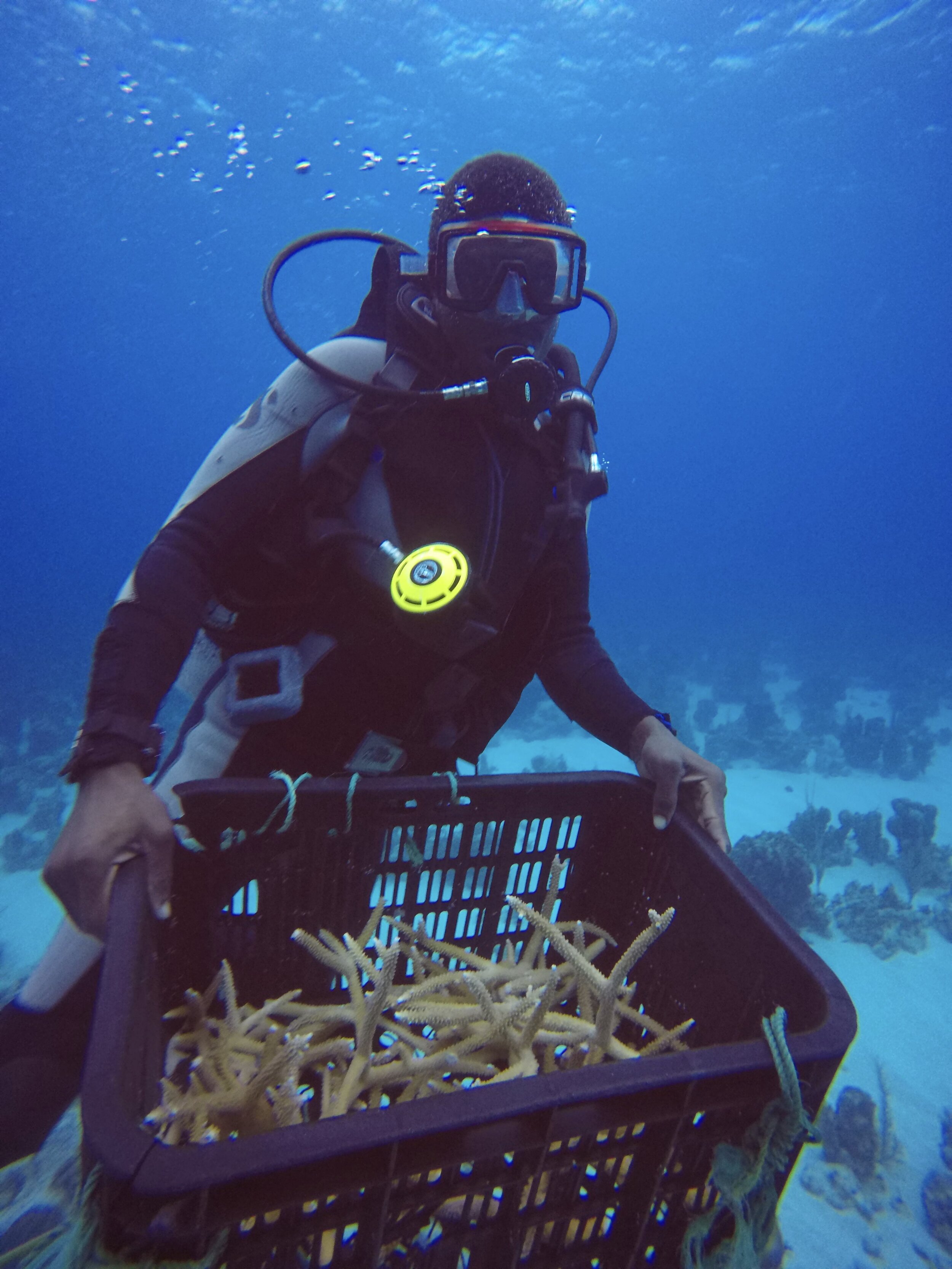Coral Propagation at Forfar Field Station: Update, October 2024
/Off the shores of Forfar Field Station, efforts are being made to repopulate and diversify the coral populations. Our Forfar Educational team works closely with staff from The Perry Institute for Marine Science and Reef Rescue Network to set up and maintain these coral restoration plots near Forfar. We have had a coral nursery since 2015.
In 2023, we established 5 coral domes at one dive site called “The Pool” which as the coral fragments grow will become an artificial reef. We also set up a plot for continual outplanting at Staniard Reef, where we hope to see improvements in hard coral cover.
In March of 2020, Reef Rescue Network staff Hayley-Jo Carr joined Forfar Educational Staff on Andros, Bahamas to continue the ongoing coral conservation project with the Forfar Nursey. A total of 121 coral fragments were successfully outplanted and the 69 remaining fragments in the nursey were maintained to cultivate more growth for future outplanting.
Corals are a marine invertebrate made up of polyps that live in colonies. Most corals form reefs by growing and expanding their surface area. Over time, single coral heads, or fragments, can build up and expand into expansive reef systems. Here on Andros, we have the third largest fringing-barrier reef in the world. It spans one hundred and ninety miles along the East side of the island. The coral types seen along the reef can vary from large bouldering Brain corals to soft gorgonian Sea Fans, and even branching Staghorn and Elkhorn corals.
The Forfar nursery is a hanging line nursery that is situated on the deeper side of the fringing-barrier reef. Multiple rounds of outplanting have been successfully completed at this site and past attached corals have grown quickly and prolifically. Two suspended ropes with horizontal fishing lines hold up to seventy pieces of growing branching corals. Staff visit the coral nursery once a month to clean away algae and hard growth, like fire coral. They ensure the corals are growing well and no disease or predator has caused damage to the colony. Recently, the bottom line of growing corals was broken. Forfar Educational staff were able to reattach the line using parachute cord and all the living corals were cleaned and cared for. Any corals that died or dropped off of the line were replaced with new fragments. Thanks to their quick efforts, the coral nursery is back in good health.
After the corals reach a certain size, usually between six months to a year of growth, staff are able to take fragments from the main coral body and plant them on the fringing-barrier reef. Cutting fragments from the suspended corals allows for new, faster growth on the main body of the coral. Corals can reproduce sexually or asexually. They can reproduce with mass spawning events in the water column or a small fragment can extend its growth even when it is not connected to its original colony by reproducing asexually. When fragments are cut away from the main body of the coral, the new fragment becomes its own body and growth will sprout. The original section will also re-sprout new growth.
Using non-toxic marine epoxy, Forfar Educational Staff then transfer the cut fragments and attach them to holes in the cleaned substrate of the outplanting site. Once the marine epoxy hardens, it holds the corals in place until they grow enough to hold themselves to the substrate. Over time, the new coral will reproduce and aid in repopulating the reef by diversifying the genetic variations in branching coral species.
Currently, the Forfar nursery has 69 total growing corals; 56 are Acropora cervicornis (staghorn), 11 are Acropora palmata (elkhorn), and 2 are Acropora prolifera (fused staghorn). Of the three species, Staghorn and Elkhorn are critically endangered, thus most of the growing space is devoted to those species. Branching corals like Fused Staghorn are becoming endangered as well. Branching corals are fast growing, but relatively brittle corals. They are also more susceptible to bleaching events due to rising water temperatures and ocean acidification.
Forfar Educational Staff will continue to clean and maintain the good health of the nursery and hope to outplant more coral fragments in April 2020. To learn more about what you can do to help protect and preserve corals, please visit oceanservice.noaa.gov/facts/thingsyoucando.html.
Written by: Haleigh Collins, Forfar Educational Staff


